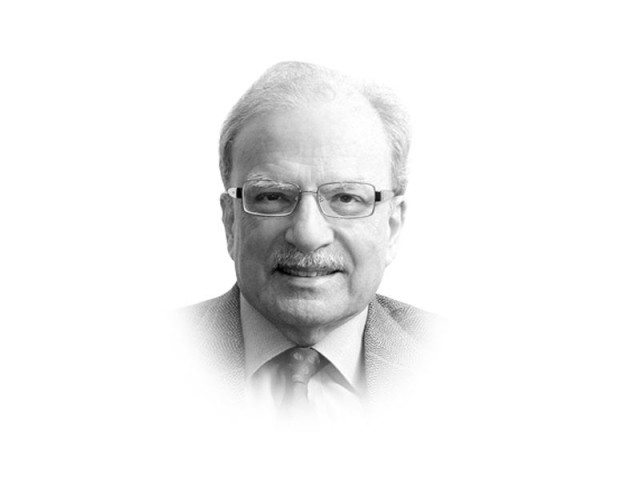
His approach to the Middle East is part of his ambition to unwind what he and some of his close associates call “Obamaism”, the stance adopted by Barack Obama in foreign affairs. The former president dealt with the problem-infested Middle East by choosing not to involve his country in the many disputes that had the region become volatile and unpredictable. At the same time, he made a point of sending a message to the Muslim world that he and his country had great respect for Islam while recognising that, on several occasions in the past, Islam and the West had been in conflict. In a powerful speech given at Al Azhar University in Cairo, in front of an audience made up largely of students, he promised to work with the followers of the Islamic faith to produce a more stable world which will have greater opportunities for the young. This is not the way Trump sees the Middle East.
The most significant step taken by the new president was to draw very close to the Kingdom of Saudi Arabia and the royal family that rules it. The new American president feels that his country and the Kingdom share a number of interests on which a close and lasting relationship could be built. During the Obama years, the United States had pulled back a bit from Saudi Arabia while initiating a programme to bring Iran out of isolation. Riyadh had long regarded Tehran as a rival. The Saudi Kingdom did not wish to see Iran expand its influence in the Middle East. The 1979 revolution that brought the Shia clerics to power had done so by removing the king who had ruled over the country for decades. The overthrow of the monarchy and the introduction of a more representative political system were seen as threats by the rulers of Saudi Arabia.
There was no subtlety in the way the new American administration swung Washington towards Riyadh. Trump chose Saudi Arabia as the first country to visit as president. Once there and in a public speech in front of a gathering of some 50 heads of Muslim countries that included Pakistan’s Nawaz Sharif, the American president focused on his commitment to destroy Islamist radicalism. He was advised not to use the terms “Islamic terrorism,” “Islamic radicalism,” “Islamic extremism,” since to Muslim ears it would sound as though these were the attributes of their religion. Instead he used “Islamist” as the defining element since that referred to political Islam. In the speech, he implied that Islamist terrorism gained foothold in some areas of the Muslim world because of the support given to it by Iran. The Saudi response to these words was ecstatic.
The Saudi rulers have three interests that guide their policymaking: to preserve the House of Saud, to beat back any possible challenge from Iran for leadership in the Middle East and West Asia, and to diversify the country’s economy. All three have consequences for Pakistan.
Riyadh is now engaged in the delicate task of passing the reins of power from the second generation of the Saudi dynasty to the third. Until now King Abdulaziz Ibn Saud, the founder of the Saudi state, was succeeded by six of his sons who together have governed for 64 years. King Salman who came to the throne in 2015 is now 81 years old and is not in good health. After ascending the throne, King Salman named Muhammad bin Nayef, his nephew, as the crown prince. Soon after the Trump visit to Riyadh, he appointed his 31-year-old son, Muhammad bin Sultan, commonly known as MBS, as the crown prince. MBS was appointed deputy crown prince and was given significant responsibilities, including the portfolios of defence and energy. The young prince is a favourite of Trump’s son-in-law, Jared Kushner, who began cultivating the Saudi royal soon after his father-in-law moved into the White House.
Riyadh is nervous about the “Arab Spring” types of movement. In 2011, these succeeded in deposing several authoritarian governments, in particular in Egypt, Libya, Tunisia and Yemen. What made the Saudi rulers nervous was the merging of interests of the restive Arab youth and political Islam. The two forces worked together to push the long-serving Hosni Mubarak from office. In the elections that followed the Muslim Brotherhood came to power, a development of great concern for those who were wedded to the old order. The military struck in Cairo and removed the Brotherhood-led government and established an administration even more authoritarian under General Fatah al-Sisi. Egypt joined Saudi Arabia, Bahrain and the UAE to sever all relations with the tiny but oil-and-gas rich nation of Qatar. This move won the support of President Trump who boasted that it was the outcome of his visit to Riyadh.
What this means is that the hold of authoritarianism in much of the Middle East will endure with a nod of approval from the United States. The restive youth will become even more agitated and ultimately challenge the established order. The region is faced with instability.
Published in The Express Tribune, July 3rd, 2017.
Like Opinion & Editorial on Facebook, follow @ETOpEd on Twitter to receive all updates on all our daily pieces.














COMMENTS
Comments are moderated and generally will be posted if they are on-topic and not abusive.
For more information, please see our Comments FAQ